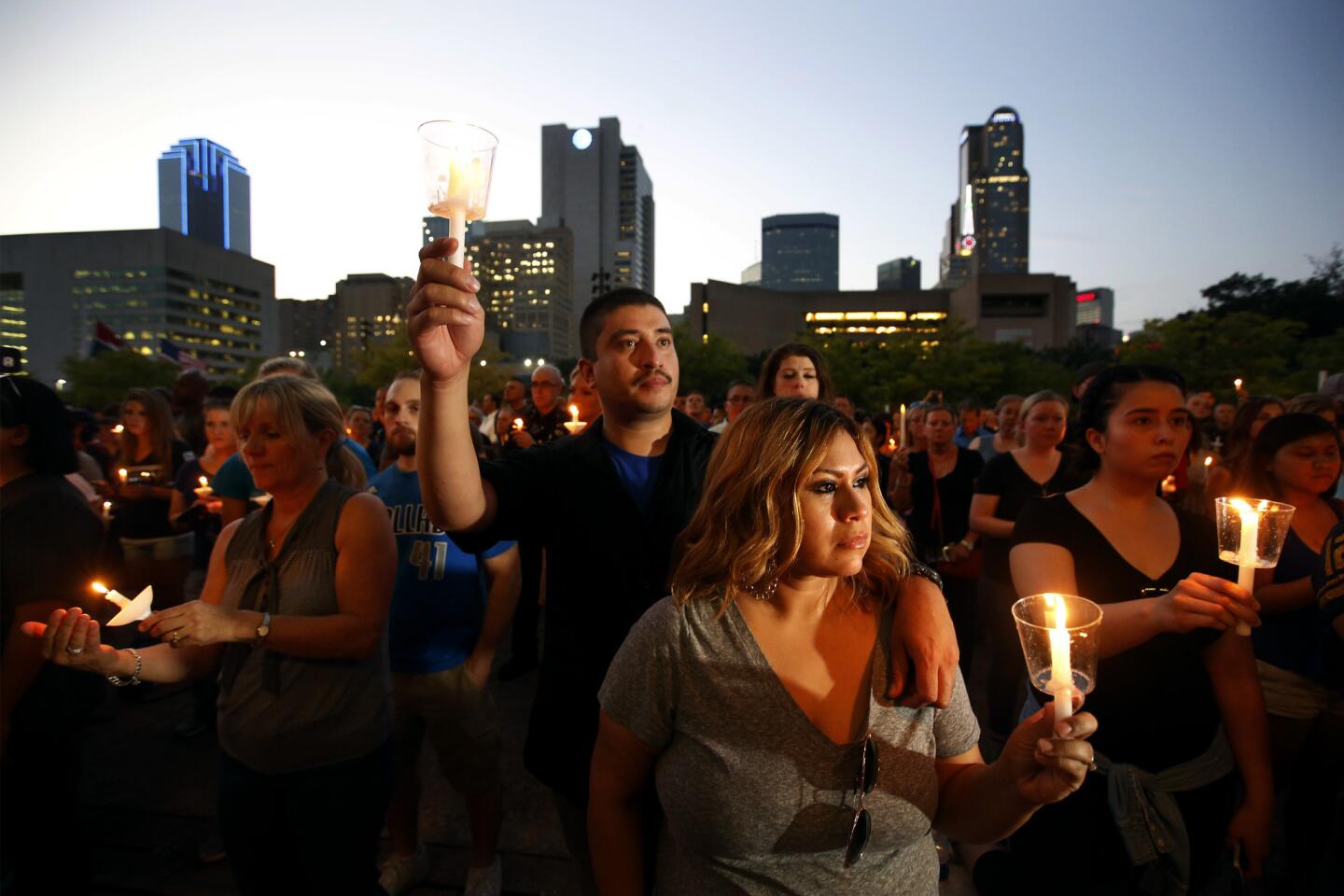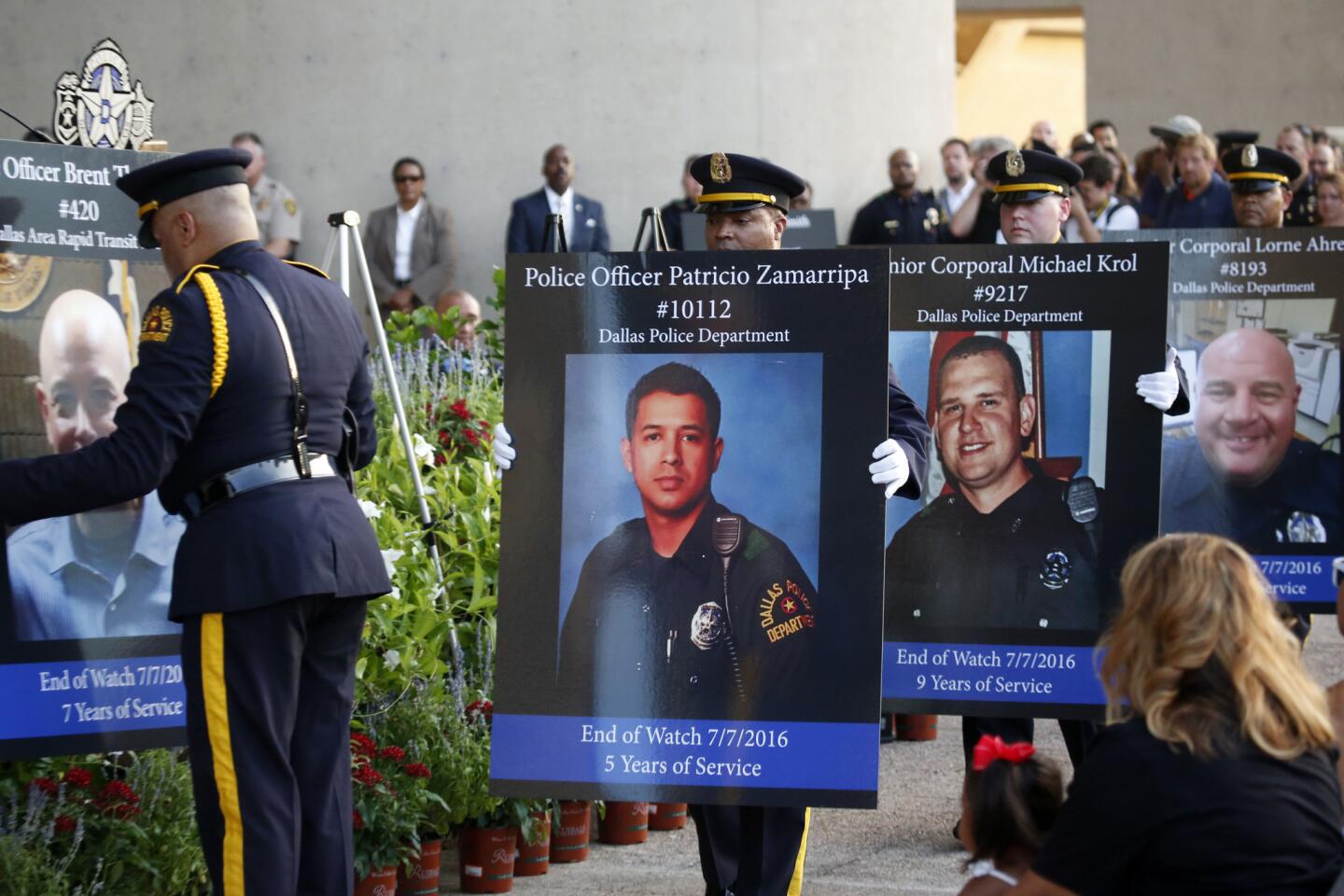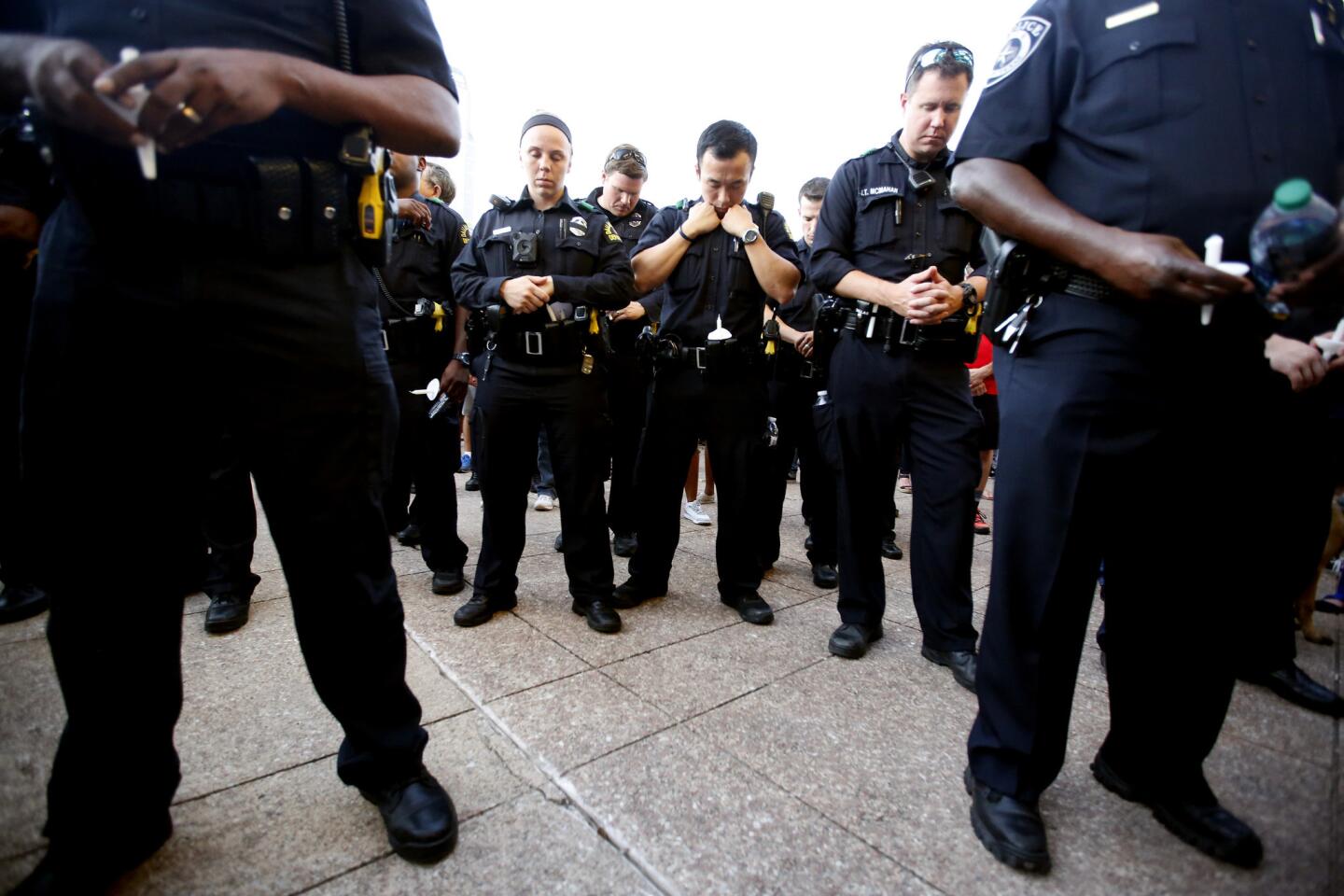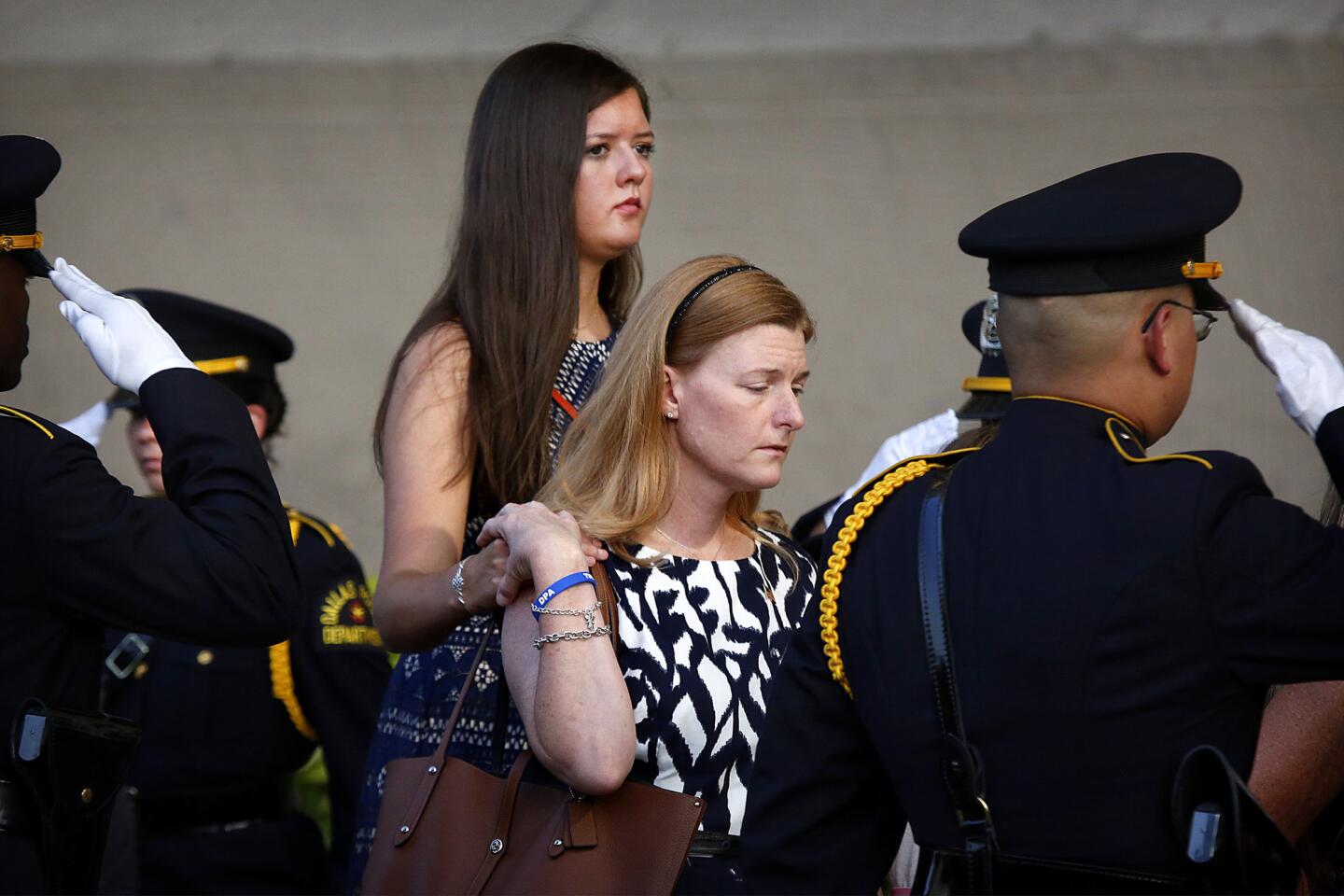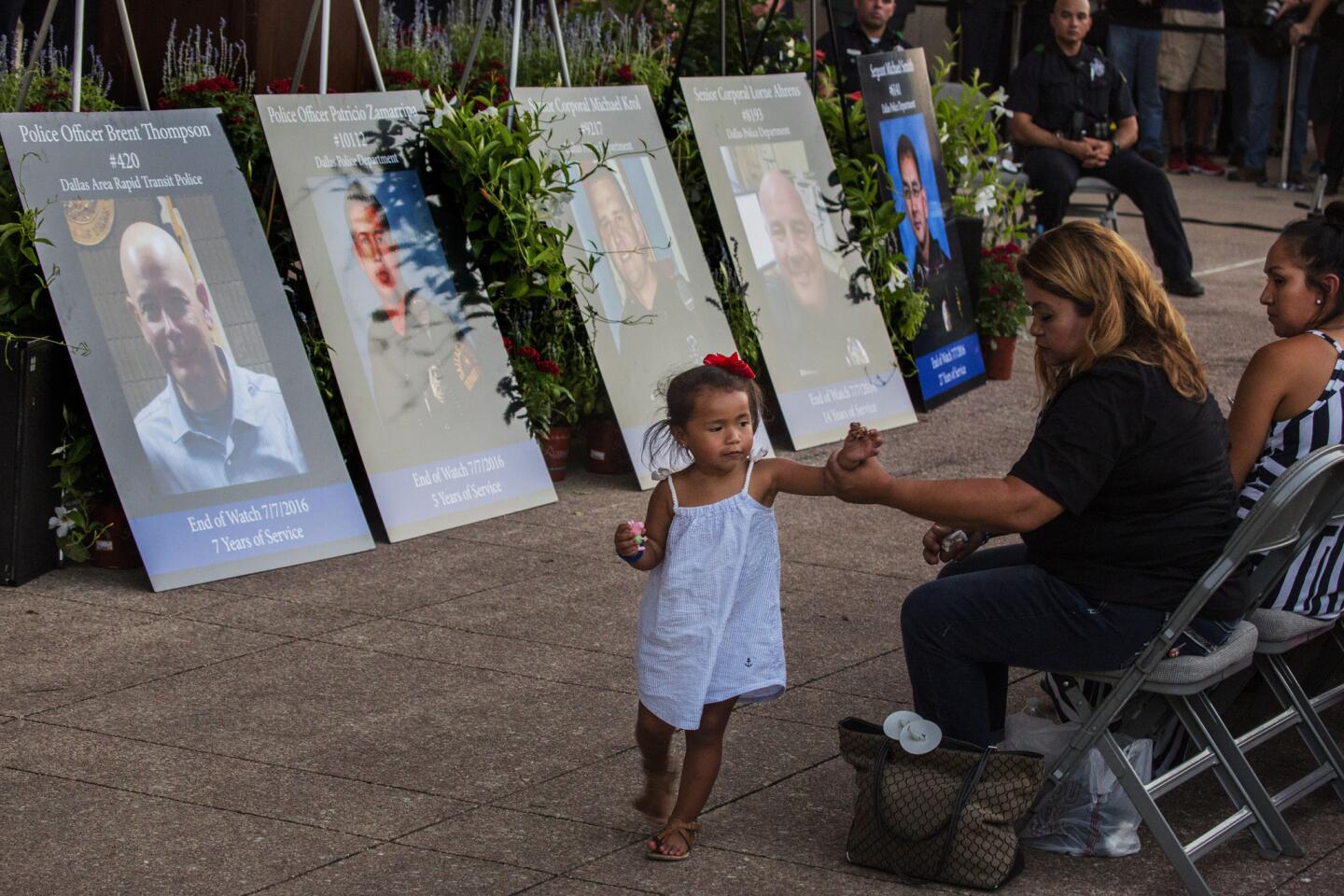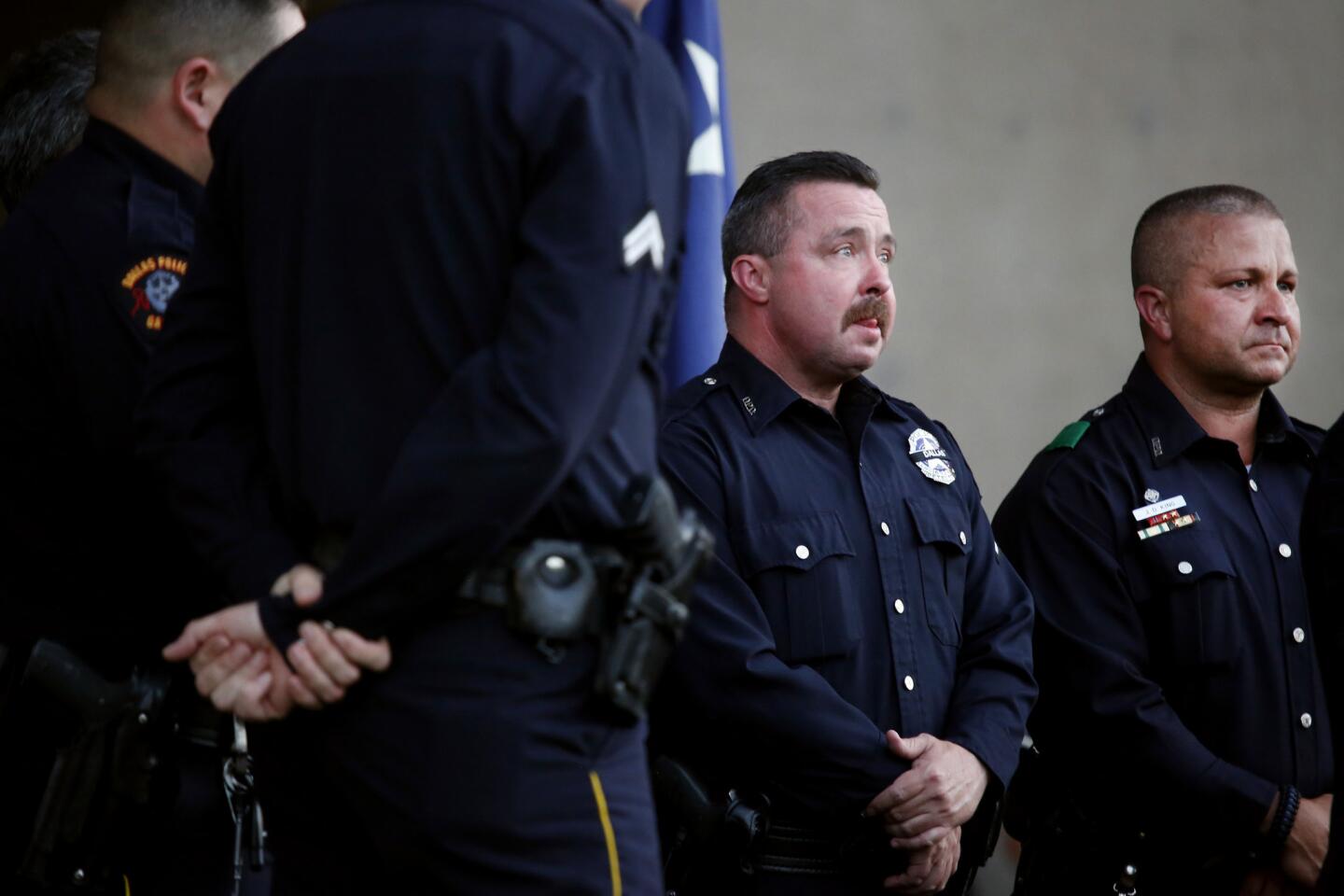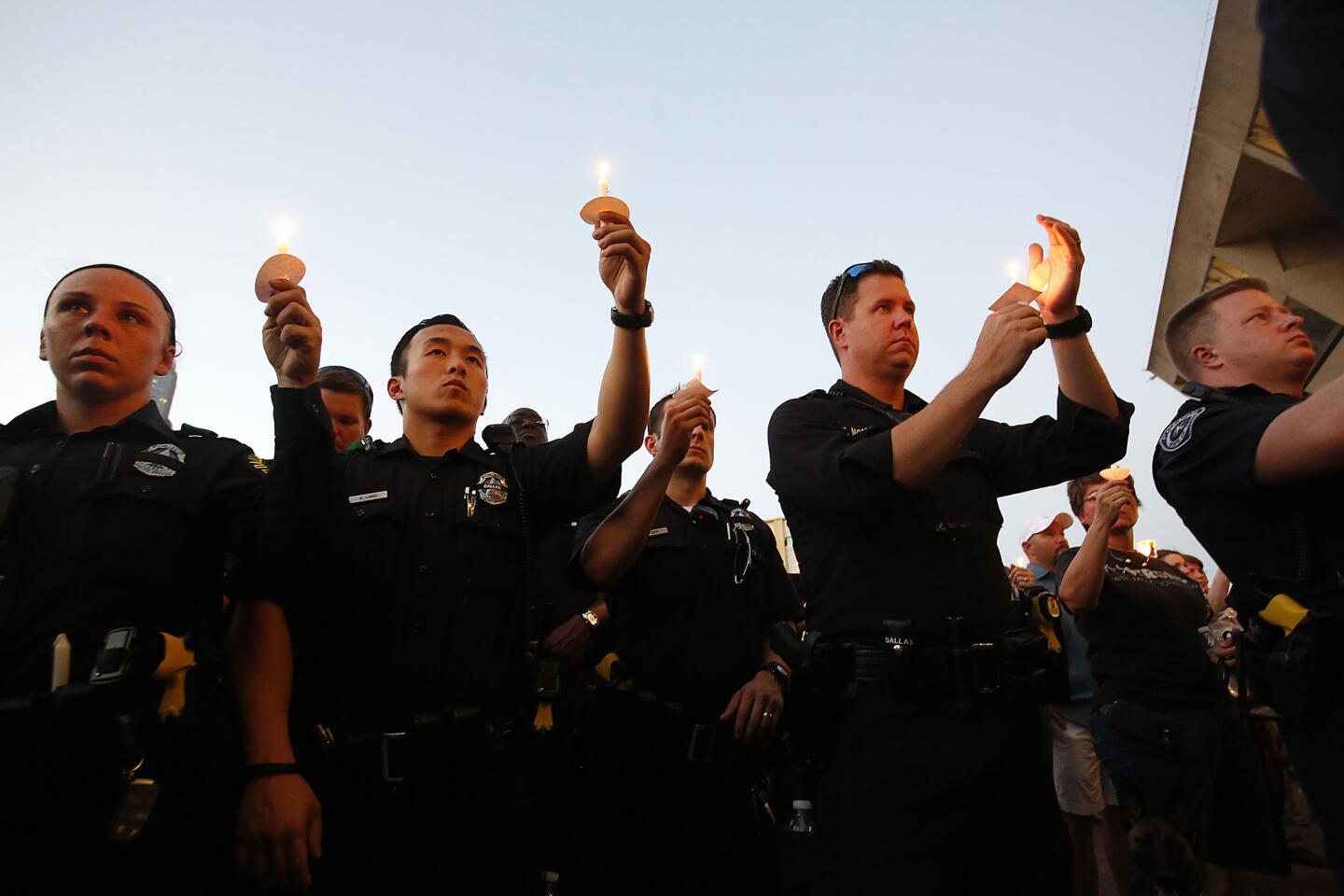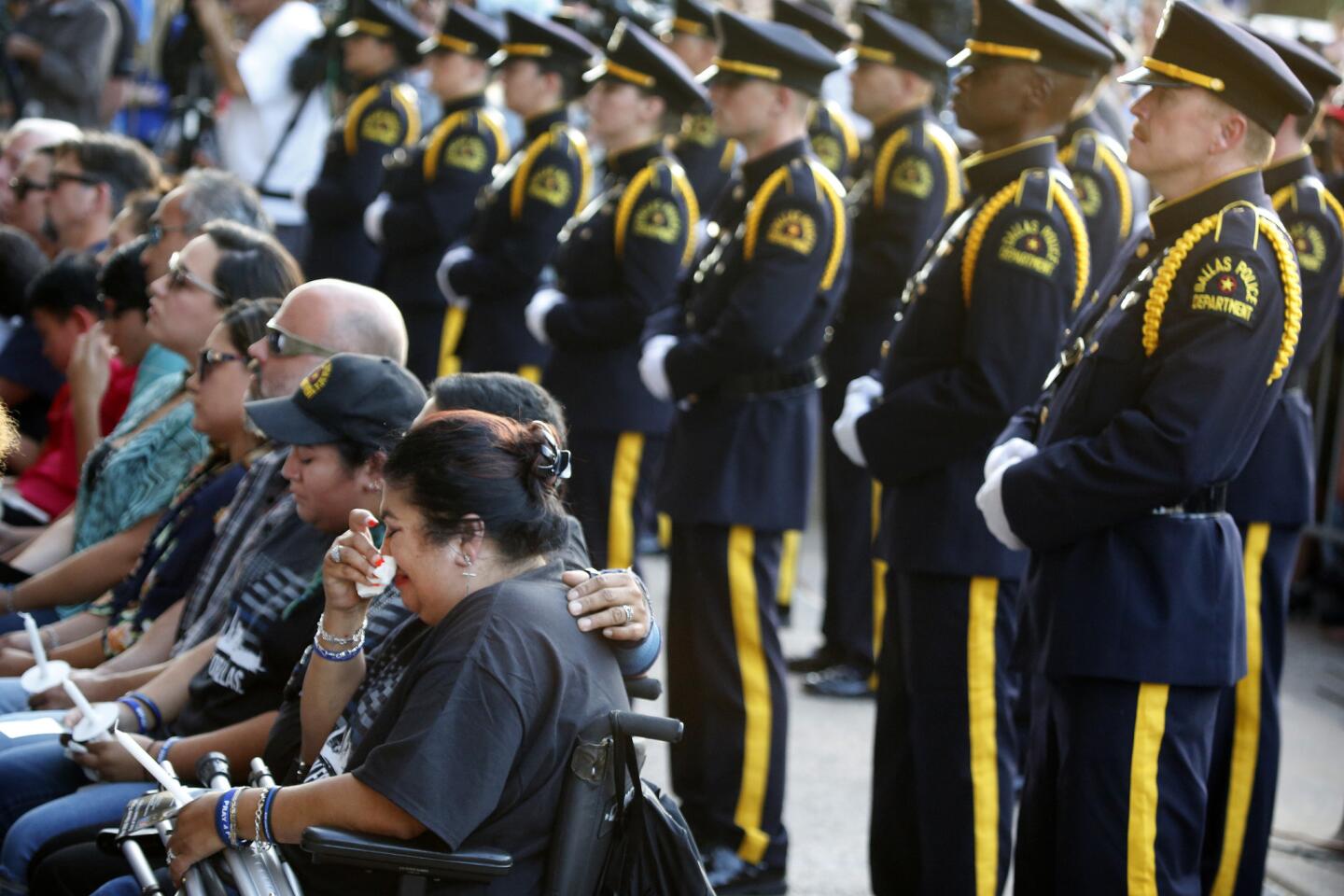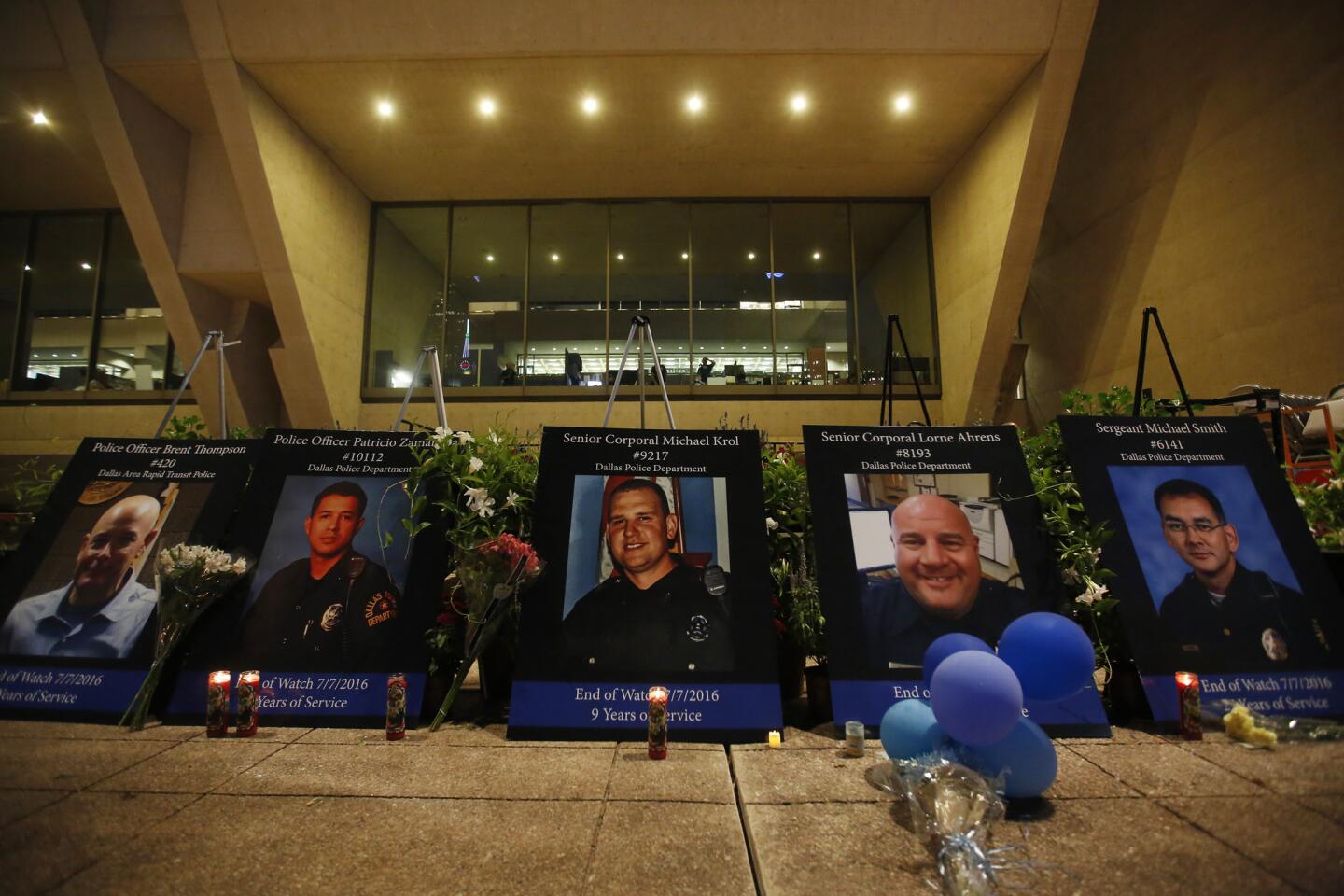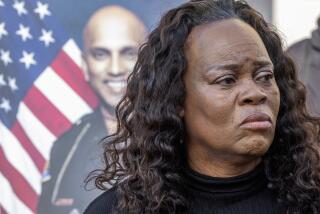‘Farewell, brother’: Dallas police mourn their fallen officers
Reporting from Dallas — The police family often speaks in code, badge numbers and radio signals, expects rookies to pay their dues and veterans to have one another’s backs.
A death in the family is never easy.
The fatal shooting of five officers while they were protecting a downtown protest here last week widowed not just spouses but partners, mentors, trainees and entire units.
Fellow police knew the five fallen officers as family men, said Ron Pinkston, president of the Dallas Police Assn.
Dallas Area Rapid Transit Officer Brent Thompson, 43, a father of six, had married wife Emily just two weeks before the shooting.
Officer Michael Krol, 40, who moved to Dallas from Michigan, loved to fish with his father and follow his hometown Detroit Lions and Tigers. He was competitive, loved to run despite being a big guy and would race fellow officers on the treadmill.
Senior Cpl. Lorne Ahrens, 48, was a “lovable giant” at 6-foot-5 and 300 pounds. He was married to Katrina, a Dallas police detective, and was raising two children.
Sgt. Michael Smith, 55, also had two daughters. He coached softball and was nearing retirement, his former partner said. He worked a desk job, she said, but he “longed to be out,” because after 27 years on the job, he felt “life was on the street.”
Also among the dead was Officer Patrick Zamarripa, a father of two known to fellow officers simply as “Z.” Zamarripa, 32, was known for cadging free tickets off buddies to WWE wrestling events or Cowboys, Mavericks or Rangers games and sweet-talking celebrity athletes into posing for selfies.
A five-year veteran, he was devoted to his downtown beat, to some of the city’s poorest residents.
The day he died, Zamarripa had been approached by a homeless man with a pressing complaint: someone had stolen his potato chips.
“This gentleman had some mental health issues, and was more upset than the average person probably would be,” recalled Zamarripa’s former partner, Officer Josh Rodriguez.
So Zamarripa walked the man to a nearby 7-Eleven to buy him some more chips and a soft drink.
“The man ate and drank what Z had bought him, but he sat close to Patrick and the other officer, as if it was a sense of security for him,” Rodriguez said. “It was as if he felt that as long as he was close to Patrick, no one would harm him again.”
The death of Ahrens had Senior Cpl. Jaime Castro thinking not of the fallen officer’s last day, but of his first.
Ahrens was a tank of a man, a former college football player and once a Los Angeles County Sheriff’s Department dispatcher. Starting over as a rookie in Dallas, he longed to join the elite 3080 unit, a highly respected “dope squad” assigned to the city’s tough southeast side.
But the first time Castro saw him, he couldn’t imagine Ahrens patrolling a beat, running after suspects, let alone making drug busts.
“How the heck is this guy going to get in a squad car?” Castro thought. “He was huge!”
The rookie surprised him, catching suspects while Castro was still giving chase.
“He’d come back to the scene with his in cuffs, and mine always seemed to get away,” he recalled of the older man.
Patrolling with Ahrens, no one ever had to use batons or fire Tasers or guns.
“All we had to do was deploy Lorne,” Castro said.
When it came time for Ahrens’ first drug bust with the unit he so longed to join, Castro was at his side.
“I have no idea how Lorne was able to squeeze into those bushes without getting 5.0’d -- in other words, getting spotted by the bad guys,” Castro said.
“I told him, ‘Don’t you leave my side; no matter what happens, we don’t separate,’ ” he said.
Ahrens took hold of him then, promising to have his back, to take a bullet for him, if it came to that.
See the most-read stories this hour >>
That’s when Castro knew Ahrens had become part of the unit, where progress was measured in shuttered drug dens and the family rule is “my partner goes home before I do.”
Instead, Castro was called to the hospital where Ahrens lay mortally wounded and watched through the glass as he took his last breath.
Now it was time to send him home.
At a vigil outside City Hall late Monday, standing before Ahrens’ relatives and those of the other fallen officers — as well as scores of fellow police, their chief and thousands of residents — the unit that had grown to depend on him mourned his loss.
“We bid you farewell, brother,” Castro called out as the other officers of the unit surrounded him, “Badge number 8193 is on a double 6.”
Code for end of shift.
ALSO
How Black Lives Matter activists are moving forward after the Dallas shootings
Dallas police chief: Open carry makes things confusing during mass shootings
She wasn’t a cop and she wasn’t white, but she took a bullet in Dallas while protecting her sons
UPDATES:
9:11 a.m.: This article was updated with information about the other fallen police officers.
This article was originally published at 8:34 a.m.
More to Read
Sign up for Essential California
The most important California stories and recommendations in your inbox every morning.
You may occasionally receive promotional content from the Los Angeles Times.
